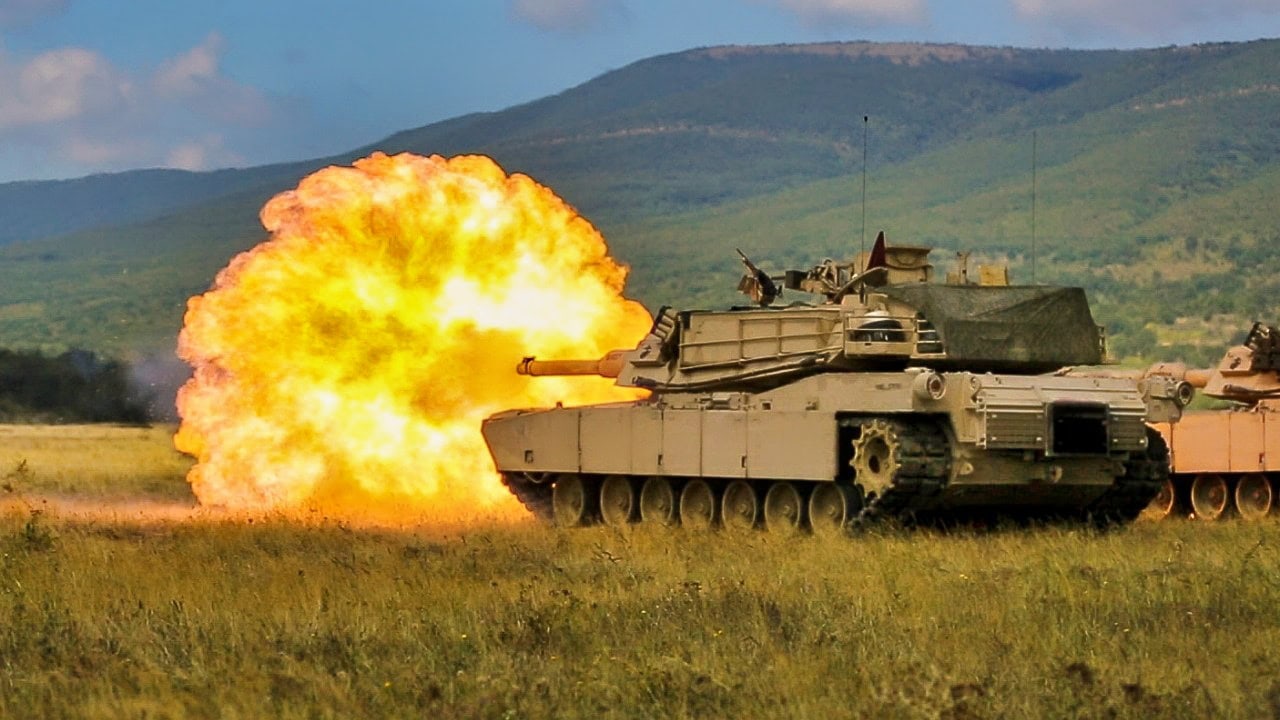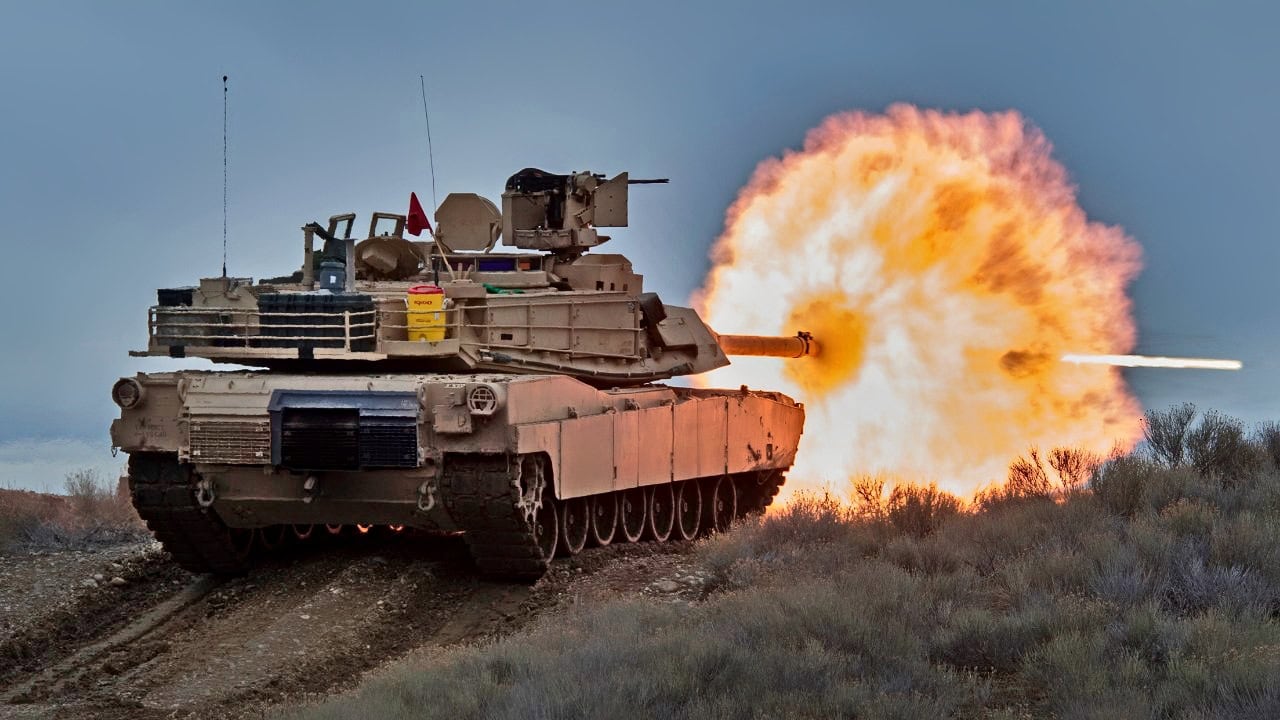Article Summary: Ukraine’s survival in its war with Russia depends critically on continued U.S. military aid, particularly logistics support that fuels frontline operations.
-Though often overlooked, sustainment—the steady supply of ammunition, repair parts, fuel, and equipment—determines victory more than battlefield valor alone. With Ukrainian forces stretched thin across a vast frontline, any interruption in logistical support could force strategic withdrawals, ceding hard-won territory back to Russia.

U.S. Marines with Combined Arms Company fire an M1A1 Abrams tank during a field training exercise at Novo Selo Training Area, Bulgaria, Sept. 21, 2015. The Marines underwent several days in the field to prepare for multinational training exercises over the next few months. (U.S. Marine Corps photo by Lance Cpl. Melanye E. Martinez/Released)
-Maintaining logistical support is vital to preserving Ukraine’s battlefield initiative. Without continued American commitment to this invisible yet decisive factor, Ukraine risks losing both military momentum and key territories in the critical months ahead.
America’s Secret Weapon in Ukraine: The Logistics Behind Battlefield Success
Any pause in military aid and intelligence to Ukraine would have profound implications that extend far beyond the immediate battlefield. Having served as the Army’s Senior Sustainment General, responsible for overseeing the logistical support of the U.S. Army and Joint Forces worldwide, I’ve observed that the continuous flow of equipment, ammunition, fuel, and repair parts—not just initial capability—ultimately determines the outcome of conflicts.
Ukrainian forces are currently stretched across a 600-mile front, and any disruption in their sustainment pipeline comes at a critical juncture where the strategic balance in Eastern Europe hangs in the balance.
The Invisible Force Multiplier: Beyond Strategy to Sustainment
Wars are not won by strategy alone; logistics and sustainment are the determining factors in whether a force can continue the fight. Even the most capable military formations will degrade without a steady supply of essential resources. The most brilliant tactical maneuvers mean nothing if troops lack ammunition, if vehicles run out of fuel, or if essential equipment breaks down without replacement parts.
This reality applies to all armies throughout history, and Ukraine’s forces are no exception. Since Russia’s full-scale invasion began, the Ukrainian military has demonstrated remarkable tactical ingenuity, resilience, and courage in the face of overwhelming odds, adapting to battlefield conditions with impressive agility.
But Ukraine’s ability to continue fighting effectively depends on a complex sustainment apparatus that delivers crucial supplies to the front lines—an apparatus that has been significantly bolstered by American logistical expertise and material support that extends far beyond the headline-grabbing weapons systems.
America’s Sustainment Pipeline: The Unseen Backbone of Ukraine’s Defense
Over the past two years, U.S. Army Materiel Command played a critical role in providing sustainment support to Ukraine. The scale of this effort has been immense and largely underappreciated by those who focus solely on high-profile weapon systems. The United States delivered 25,615 major end items, including armored vehicles, rocket systems, artillery, and radar systems—the backbone of Ukraine’s mechanized defense.
We’ve supplied 190.6 million rounds of ammunition, enabling Ukrainian forces to maintain sustained combat operations against a numerically superior adversary with greater industrial capacity and shorter supply lines. This massive logistical effort has drawn upon 33 U.S. installations, including 13 Army depots, four Army Prepositioned Stock sites, and 18 ports of embarkation—a nationwide mobilization of America’s logistics infrastructure that represents decades of investment in military readiness.
Beyond equipment deliveries, we’ve established innovative remote tele-maintenance operations that have facilitated the repair and upkeep of howitzers, missiles, and other critical weapon systems, maximizing battlefield availability despite challenging conditions. This technical support represents a revolution in remote battlefield maintenance—a capability that has kept weapons systems operational in conditions that would have rendered them combat-ineffective in previous conflicts.
The Looming Sustainment Crisis: A Strategic Inflection Point
Based on current conditions and without continued robust sustainment support, Ukraine’s ability to maintain effective combat operations will become increasingly constrained. By the end of June, without renewed American commitment to provide major end items, repair parts, and ammunition, Ukraine will likely face what military planners call an “operational tipping point”—a moment when the cumulative effect of sustainment shortfalls forces fundamental changes in operational posture and battlefield decision-making.
The consequences of this sustainment shortfall would be profound and would reshape the strategic landscape in Eastern Europe in ways that extend far beyond Ukraine’s borders.
Ukrainian forces would need to shorten their supply lines by withdrawing from extended positions to protect critical logistical hubs, potentially ceding hard-won territory that represents months of costly offensive operations.
They would be forced to prioritize engagements in select areas where sustainment can be maintained, reducing their flexibility in responding to battlefield developments and surrendering the initiative to Russian forces. Ammunition and equipment conservation would become necessary, limiting the scale of offensive operations and even hampering defensive capabilities as commanders must make difficult choices about where to allocate increasingly scarce resources.
As conventional operations become harder to sustain, Ukrainian forces would need to rely more heavily on asymmetric tactics—effective for disruption but insufficient against the full weight of Russia’s conventional military when deployed across a front measuring hundreds of kilometers.
The Strategic Imperative: Sustaining the Initiative
Without continued American-led support, Ukraine will face the classical military dilemma of contracting its operations, choosing carefully where it can fight, and ultimately ceding the initiative to Russian forces.
This would not only jeopardize Ukraine’s territorial integrity but could fundamentally alter the strategic balance in Eastern Europe for decades to come. The consequences would extend beyond Ukraine’s borders, affecting NATO’s eastern flank and potentially emboldening revisionist powers elsewhere who are watching this conflict closely for signs of Western resolve or hesitation.
About the Author:
LTG Charles Hamilton (U.S. Army, ret.) is the former commander of U.S. Army Materiel Command. This first appeared in RealClearDefense.

